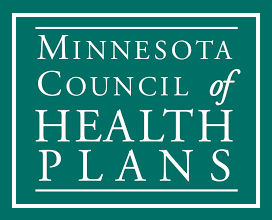Working to solve racial disparities in Minnesota’s birth outcomes and experiences by keeping a spotlight on the issue
No other developed nation has a higher maternal mortality rate than the U.S. and the rate today is higher than it was 25 years ago. A look behind these overall numbers shows even worse outcomes for Black families: Black women are about three times more likely to die of pregnancy related complications than white women and Black infants are more than twice as likely to die as white infants.
The mission to improve maternal and birth outcomes in the U.S., especially for Black families, grows more urgent each year. As we recognize Black Maternal Health Week April 11-17, it’s important to keep a spotlight on these issues to find opportunities to address and resolve racial disparities in birth outcomes and birth experiences.
The Minnesota Department of Health (MDH) Maternal Mortality Review Committee at the Minnesota Department of Health (MDH) recently released a report on maternal mortality documenting significant disparities in maternal mortality; Black Minnesotans, who comprise 13% of the birthing population, accounted for 23% of maternal deaths during the study period. The report made several recommendations to address disparities in maternal health and prevent maternal deaths, including:
- Expanding access to care,
- Improving support for those with substance use disorders (SUD) or mental health conditions,
- Acknowledging historical trauma and racism and addressing bias, and
- Providing support for more community support and culturally informed care.
Dr. Rachel Hardeman, co-chairs the committee that conducted the analysis for the report and also leads the Center for Antiracism Research for Health Equity at the University of Minnesota and has called for Minnesota to lead the way in implementing change in communities to improve outcomes.
The Minnesota Council of Health Plans and our member plans are working together to tackle these disparities in a variety of ways, including through advocating for systems change at the legislature, helping grow the workforce, centering patients to improve the birthing experience, developing educational initiatives, and partnering with communities.
The Council and member plans are also working collaboratively through the Healthy Start Performance Improvement Project, which began in the spring of 2021.
The project focuses on ensuring a “healthy start” for Minnesota children by concentrating on improving services provided to pregnant women and infants, with a particular focus on reducing racial and ethnic disparities. Interventions will include working with a wide variety of partners to improve access and coordination of resources to help mothers and children get the right care at the right time in the right setting.
In addition to our collaborative work, member plans are leading a variety of efforts to improve outcomes. See just some of the recent examples of this innovative work below.
- Blue Cross Blue Shield of Minnesota – Growing the doula workforce and increasing number of diverse doulas by hosting free, 4-day doula training in partnership with Everyday Miracles.
- HealthPartners – Educating patients and providers about the availability and importance of doula care to increase uptake of doula services and better understanding of how doulas work with medical care teams.
- Hennepin Health – Supporting healthy pregnancies, culturally congruent prenatal and postpartum care, and positive birth and well-child outcomes with a focus on community partnerships
- Medica – Supporting the “doula dads” program to support families through the birthing process.
- Sanford – Improving the birthing experience and centering patient wishes through the use of birth navigators, doulas and midwives in the hospital.
- UCare – Advocating for systems change to reduce structural barriers for building the doula workforce; especially for Black doulas.

